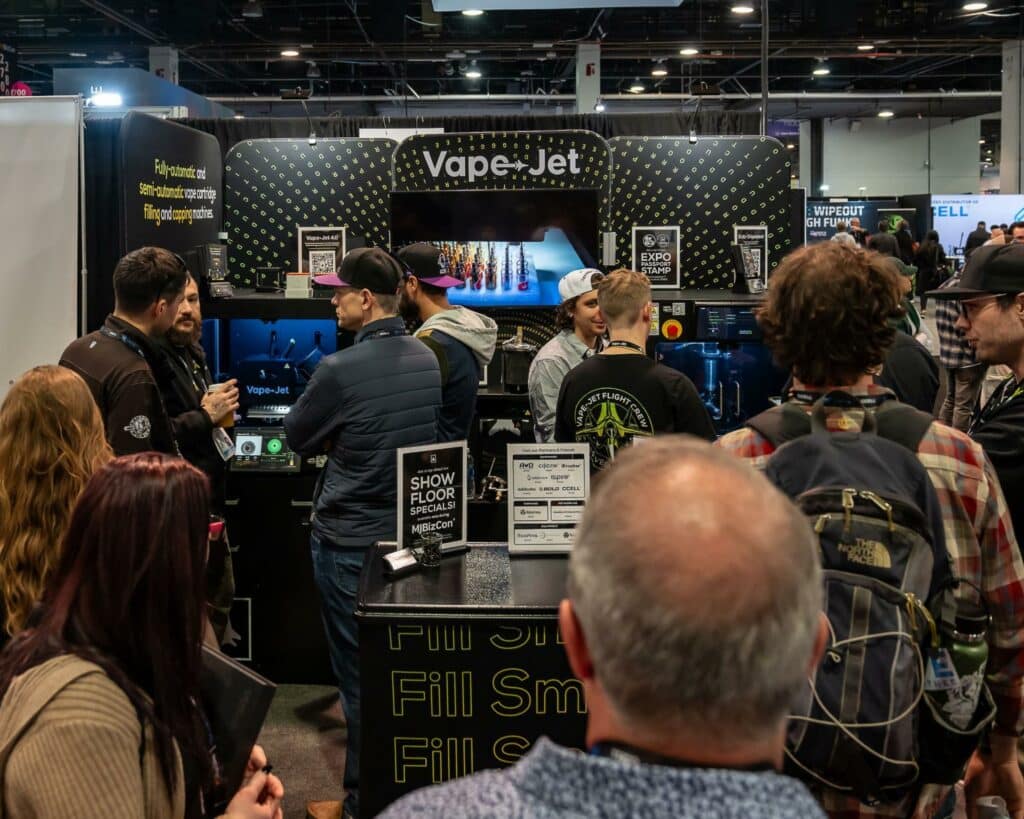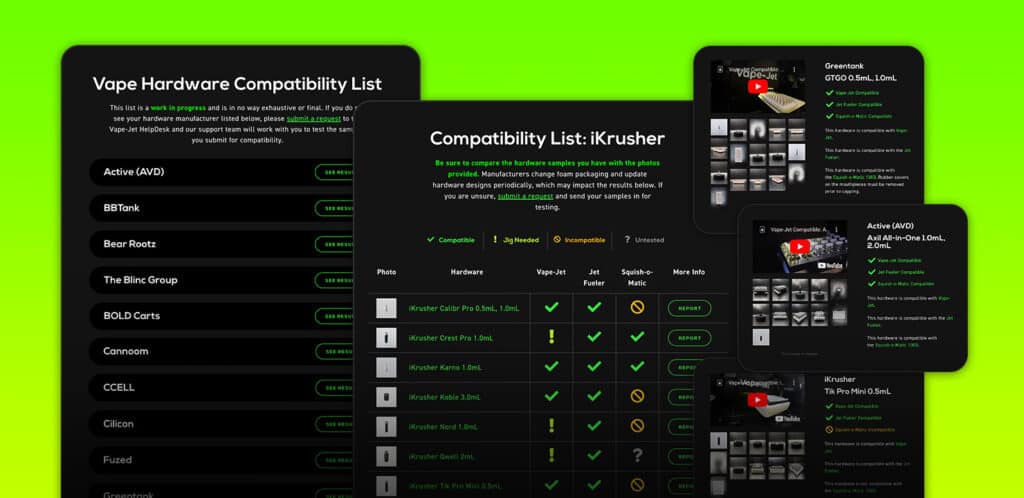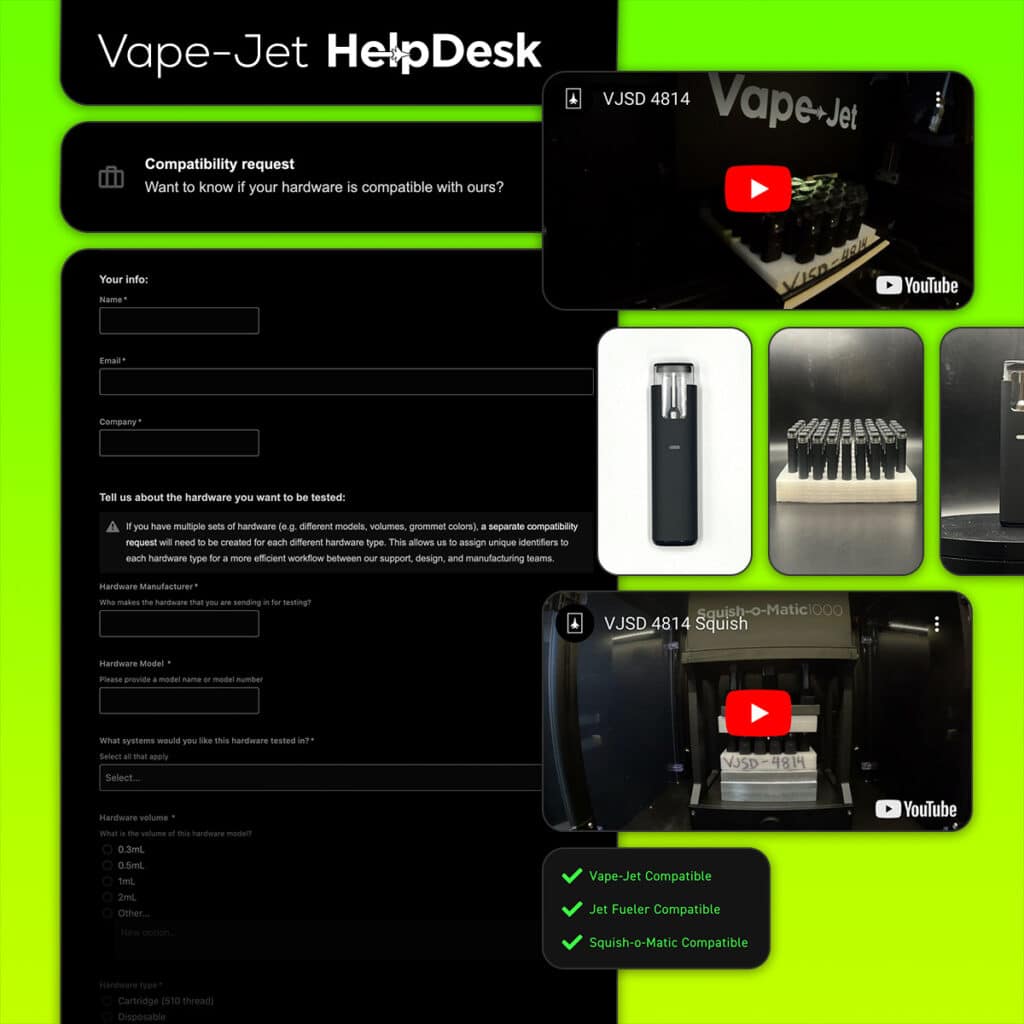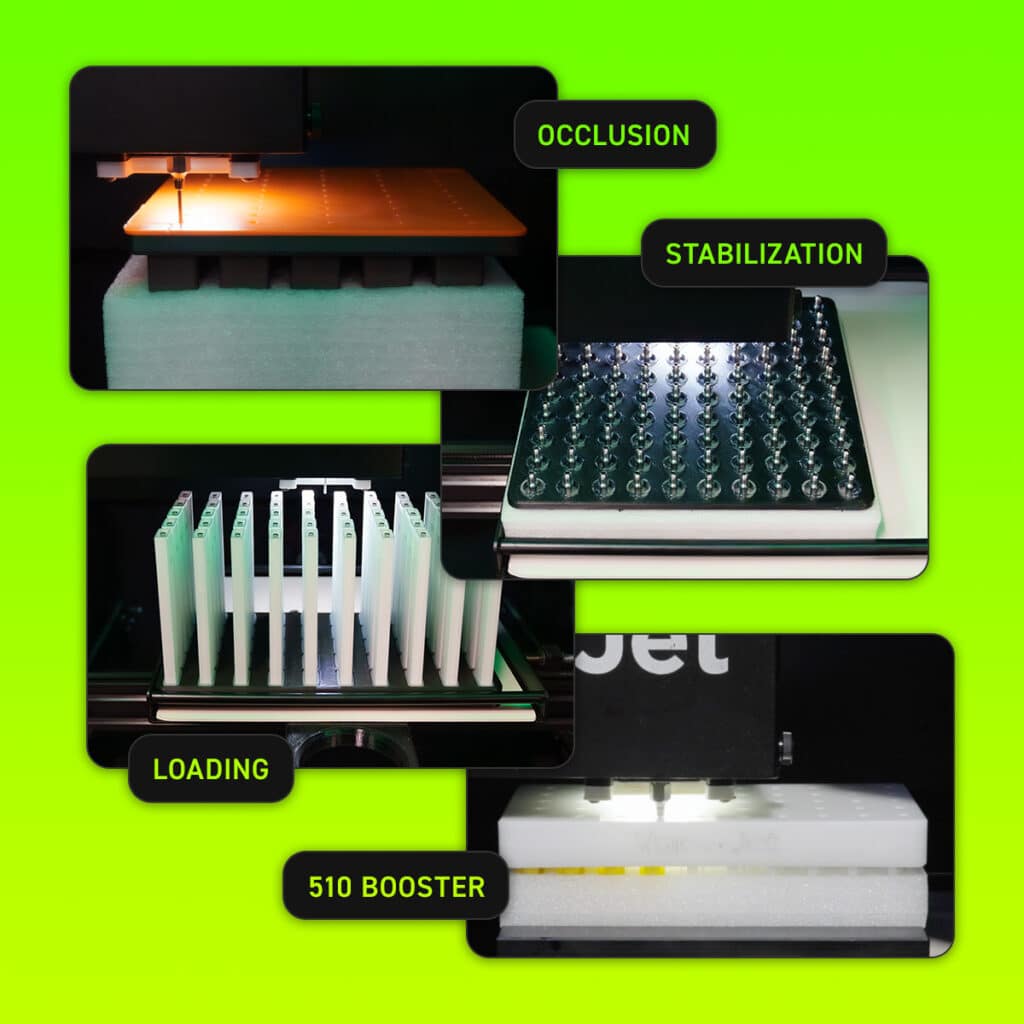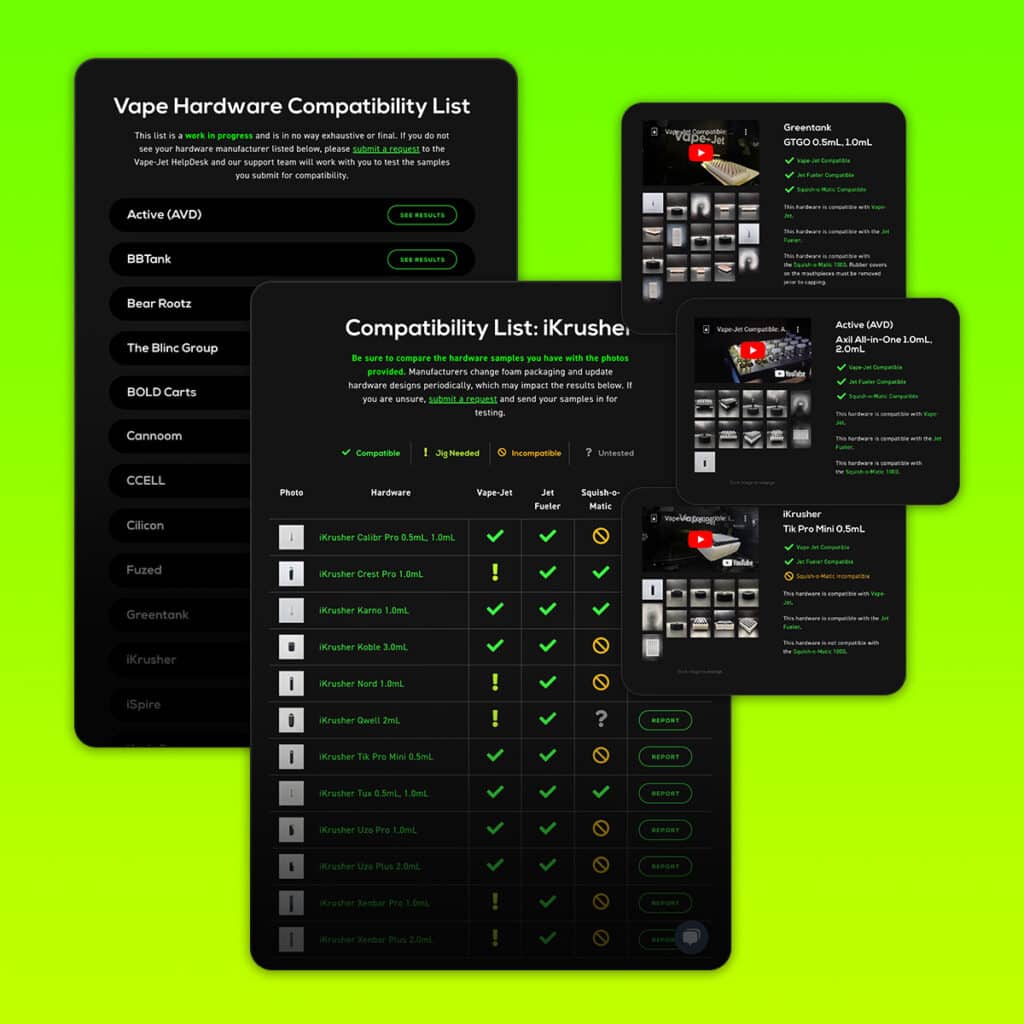
The cannabis plant is one of the most complex in the world. Not only does the plant compound content vary from strain to strain, but it can also vary from cultivator to cultivator and environment to environment.
Complicating things even further is the fact that these complexities and how oil is extracted can affect cannabis oil’s viscosity. If viscosity varies from strain to strain and batch to batch, this poses a significant challenge for those filling vape carts and all-in-one vape devices.
To help you navigate the most common and complex challenges in cannabis vape production, we answer the question, “How to handle viscosity changes?” in our ultimate guide. Keep reading to learn more about viscosity management, techniques, and equipment to help.
Why Viscosity Management Is Critical
Put simply, viscosity management is critical when producing cannabis vapes because it directly impacts both product quality and safety. More scientifically, the proper viscosity ensures even heating and vaporization of the oil, preventing inadequate delivery and overheating. Too thick of oil can lead to clogging and poor wicking. Too thin of a mixture may leak or vaporize too quickly, potentially causing sputtering and leaking.
In the competitive cannabis market, one bad vape experience (one that pulls too hard or leaks) can immediately negatively affect customer loyalty and retention. So, understanding viscosity and closely monitoring and managing it is crucial to being considered a “top-shelf” brand.
Viscosity’s Impact On Vaporization Technology
There are no ifs, ands, or buts about it; the viscosity profile of cannabis oil also directly influences how vaporization hardware performs. Optimal viscosity ensures proper wicking through cotton, ceramic, or mesh materials to the heating element in all-in-one devices and battery cartridge systems.
When viscosity is too high, it strains the battery by requiring more power to heat the thicker oil, reducing battery life and potentially leading to burnout. Conversely, too thin oils can flood heating chambers, causing uneven heating and potential device failure.
Modern vaporizer batteries typically operate between 2.5 and 4.8V, meaning the oil’s viscosity must be calibrated to perform consistently across this voltage range. With the popularity of temperature-controlled devices, precise viscosity helps maintain accurate temperature regulation and prevents degradation of cannabinoids and hardware components.
This offers consumers a more accurate representation of the plant’s complex profiles and a higher-quality buzz. Overall, managing viscosity is vital for not only the consumer experience but also for maintaining the integrity of device technology.
Problems With Viscosity In Production

Understanding the most common problems with viscosity in production will help you better understand the solutions and improve how your lab or facility works. So, if you’re lucky enough not to have experienced these already or are new to the subject, here are some significant issues with viscosity vape filling.
- Temperature Fluctuations: During production, ambient temperature changes can dramatically affect oil viscosity, leading to inconsistent fill volumes and weights. Oil temperature can expand or contract when it varies, causing over or underfilling of cartridges and devices.
- Homogenization Issues: Inadequate viscosity can result in poor homogenization of cannabinoids, terpenes, and carriers. This leads to the degradation of the compounds and inconsistent potency throughout the batch.
- Air Bubbles: When oil viscosity is too high during filling, it can trap air pockets within the cartridge. These bubbles can affect customer satisfaction, cause heating issues, and potentially damage the device’s atomizer.
- Flow Rate Inconsistencies: Improper viscosity management disrupts automated filling systems’ flow rates, causing irregular dispensing patterns. This leads to production delays, waste, and inconsistent fill levels across batches.
- Equipment Clogging: Overly thick oils can clog filling needles, pumps, and transfer lines. This requires frequent cleaning cycles, reduces production efficiency, and increases the risk of equipment damage.
- Post-Fill Migration: Insufficient viscosity control can allow oil to seep into threading or other cartridge components after filling, creating cleanliness issues and potential device failures.
Techniques For Managing Viscosity Changes
Now that you understand the problems, the next thing to understand for “how to handle viscosity changes” are the techniques or solutions you can implement to help.
Precision Temperature Control
Precision temperature control is crucial to maintaining the optimal viscosity throughout the production process. This includes not only vape filing but also critical points during the process. From bulk storage to filling, an ideal working viscosity is typically at 45-65°C (113-150°F).
Consistent temperature control prevents the common issues of:
- Irregular flow rates
- Trapped air bubbles
- Inconsistent fills
Advanced systems often offer extractors real-time viscosity monitoring coupled with temperature controllers to make micro-adjustments. This helps ensure the oil maintains proper flow characteristics from the first cartridge to the last of a production run.
Real-Time Monitoring And Testing
Real-time monitoring and testing during vape filling employ advanced viscometry sensors and inline testing equipment to measure oil viscosity continuously throughout production. These systems typically use rotational or vibrational viscometers integrated directly into the filling line, providing immediate feedback on viscosity changes.
When deviations from target specifications are detected, automated systems can adjust temperature controls or alert operators before quality issues arise. Regular sampling and laboratory testing complement real-time monitoring, offering detailed analysis of viscosity stability, ensuring consistency across batches, and validating in-line measurements.
This dual approach of continuous monitoring and periodic verification helps maintain precise viscosity control, which is essential for high-quality vape production.
Viscosity And Vaporization: Ensuring Device Compatibility
Again, it’s not just about getting the viscosity right for optimal filling; it’s about offering consumers a device compatible with the extract’s viscosity for optimal vaporization.
Importance of Matching Formulations to Devices
Another crucial part of producing high-quality vape products is matching specific extract formulations to appropriate vaporizer devices for optimal performance. Each all-in-one vaporizer design has unique specifications for viscosity ranges, heating capabilities, and materials compatibility. Using a formulation that’s too thick or thin for a particular device can lead to poor and uneven heating, leakage, or device failure.
For instance, cartridges designed for high-viscosity oils typically have larger intake holes and more robust heating elements than those meant for thinner formulations. You’ll also want to consider the unique compounds of the extract and controlled temperatures to prevent the degradation of specific cannabinoids and terpenes, which can affect the plant’s natural expression.
Of course, one factor to consider if you’re deciding between vape carts and all-in-one devices is that you won’t be able to have as much control over matching formulations to device temperatures with vape carts. These products can be attached to any compatible battery and heated at any temperature selected by the user.
How Filling Machines Address Compatibility
The end product of your vape cart or all-in-one device can only be as good as the oil and machine you fill it with. Instead of wasting quality oil by using subpar filling equipment that’s unable to handle the most challenging vape viscosity tests, consider upgrading to the most elite fleet available on the market today.
VapeJet is the leading manufacturer of state-of-the-art vape and dab jar-filling machines designed to reduce costs and fill variability while preserving product quality. So, to finish our ultimate guide, let’s review their collection of AI-powered automatic vape cartridge-filling machines and more.
Fully-Automatic Vape Cartridge Filling Machine
The VapeJet is the premier automatic vape cartridge-filling machine that can fill between 5,000 and 10,000 vape cartridges and all-in-one devices per shift with its advanced technology. It offers operators the lowest operating temperatures of any machine on the market and the lowest labor inputs, with features and controls like:
- Machine vision alignment
- Environmental controls
- Pharmaceutical grade pump
- Automated clean-in-place
- And more
Semi-Automatic Vape Cartridge Filling Machine
The Jet Fueler, a semi-automatic vape-filling machine from the same manufacturer as the VapeJet, is less automatic yet still impactful for efficiency. It, too, can help facilities fill up to 9,000 vape cartridges or devices per shift, with more labor input than the fully automatic version. With advanced temperature controls, it can output the optimal viscosity vape fillers need.
Semi-Automatic Dab Jar Filling Machine
The Dab Dispenser by VapeJet is the leading machine for dispensing dabs or jars of oil or concentrates. Say goodbye to hand gramming jars, with the advanced machine that can simultaneously fill and weight check up to 500 1g jars an hour. The Dab Dispenser also delivers ±1% fill accuracy with maximum quality control for various viscosities.
Elevate Your Cannabis Manufacturing With Viscosity Precision Today
All in all, cannabis oil is a precious liquid that should be treated as such. Hence, why so many extractors, vape cart, and all-in-one vape brands are now upgrading their equipment to align with the market’s preferences. As legal consumers grow and mature, so do their tastes, desired experiences, and the demand for high-quality products.
To keep your brand ahead of the game, explore upgrading your equipment with VapeJet to protect viscosity, improve efficiency, and increase your bottom lines. Begin exploring our fleet of automatic vape cartridge filling machines and more now.
Have questions? Review our FAQ’s or get in touch! Before you go, follow VapeJet on Instagram to stay in touch with all the latest vape industry news, equipment updates, and upgrades.





